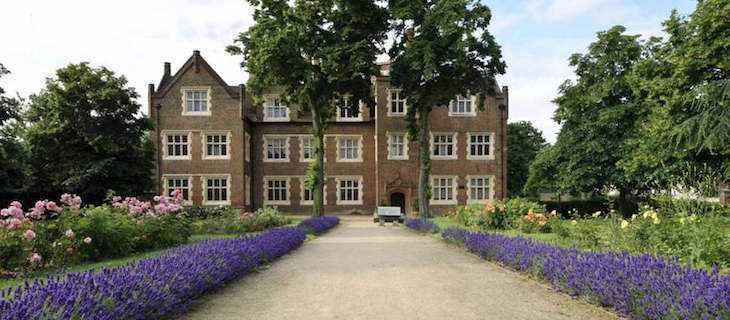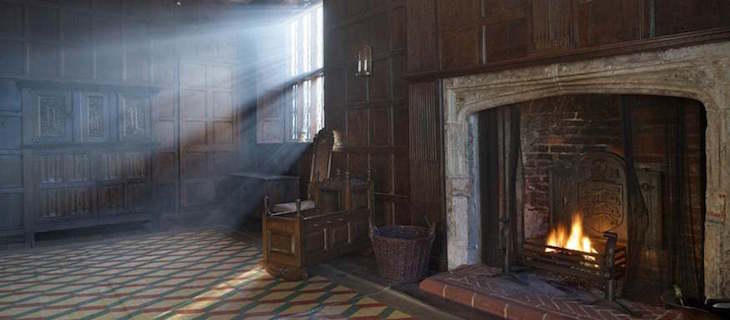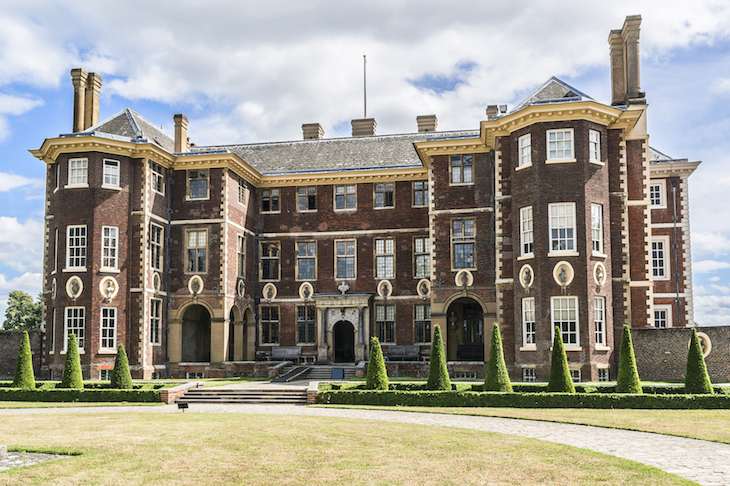The National Trust turned 125 in 2020. To mark the occasion, we produced this guide to its London properties.
National Trust membership will get you free entry to almost all of these attractions (the exception being 575 Wandsworth Road). However, five of the locations can be visited for free by anyone.
National Trust Buildings in Central London
The George Inn

One of London's most famous pubs, The George has a history that stretches back centuries. Dubbed 'Shakespeare's local' by one recent biographer, the pub caught the eye of the National Trust thanks to its status as the only remaining galleried coaching inn in London. It's an absolute beaut, though gets a little overcrowded in the summer.
The George Inn. Open all year round, day and evening. 77 Borough High Street SE1 1NH.
Strand Lane 'Roman' Baths

You're probably familiar with the disused Strand/Aldwych tube station, but did you know that there's another historic curiosity lurking round the back? The so-called 'Roman' baths are nothing of the sort — few, if any Roman remains have been found in this part of town. The well-preserved plunge pool is instead from the 17th century, but is nevertheless an unusual survivor. This isn't a National Trust property to spend the whole day it — 10 minutes should suffice — and there's certainly no gift shop. Admittance is via pre-booking with Westminster Council.
Strand Lane 'Roman' Baths, free tours must be prebooked via website, or else viewed on Open House weekend. 5 Strand Lane WC2R 2NA
National Trust Buildings in North London
Fenton House and Garden

Hampstead's bricky cube of splendour, Fenton House sits in a secluded spot away from the Heath-bound tourists. It's an odd one to visit. Nobody truly famous is associated with the house, and it lacks any great historical importance. But a stroll around the grounds and a waltz through its elegant rooms still provides a memorable diversion. Its biggest claim to fame is the collection of early keyboard instruments, though we're talking more 16th century virginals than Kraftwerk.
Fenton House and Garden. Paid entry. Open Wed-Sun from March till October. Hampstead Grove NW3 6SP.
2 Willow Road

Another Hampstead home, though utterly different from Fenton House. 2 Willow Road was designed and lived in by Ernő Goldfinger, the architect behind the Trellick Tower and Balfron Tower (and, yes, the naming inspiration for the James Bond character). It's built in a 1930s modernist style that is not to everyone's taste, but certainly has its adherents. Inside, the halls are decked with period furniture also designed by Mr G.
2 Willow Road. Paid entry. Open Wed-Sun from March till October. 2 Willow Road NW3 1TH.
National Trust Buildings in South London
Morden Hall Park

It's not a building. Well spotted. Nevertheless, Morden Hall is named after a building. It still stands. But that bit's not owned by the National Trust, and you can't go inside except at fancy weddings. The park's a real charmer, though. That's mostly thanks to the River Wandle, which wandles its way through the park and serves as a natural splash feature for the kids. The trees are something special, too — a veritable Kew Gardens of unusual species. Throw in two cafes, a second-hand bookshop and the National Trust's only garden centre, and you have a park worth making a journey for.
Morden Hall Park. Free entry. Phipps Bridge Tramlink stop.
Petts Wood and Hawkwood

A second outdoor attraction can be found in south-east London. Here, the 136 hectares (338 acres) of Petts Wood and Hawkwood contain a much-cherished haven for wildlife. The woodlands' other treasure is a memorial to William Willett who, for good or for ill, gave us British Summer Time.
Petts Wood and Hawkwood. Free entry all year. Chislehurst BR5 1NZ.
575 Wandsworth Road

It must be a unique offer from a visitor attraction: "We can also provide a pair of socks for £2.00." But so precious is 575 Wandsworth Road that you're not allowed to tramp around in proper footwear — slippers or socks only. An outwardly unremarkable terraced house conceals unique features inside. Its previous resident, Khadambi Asalache, spent two decades carving intricate patterns into the walls, ceiling and doors. It goes to show that houses don't need to be grand, nor home to privileged families to be worth saving for the nation.
575 Wandsworth Road. Prebooked, paid entry only (even members are charged £4 for this unique property). 575 Wandsworth Road SW8 3JD.
National Trust Buildings in East London
Eastbury Manor House

London's most surprising National Trust property, in that it lurks within the middle of a Barking housing estate. This impressive Tudor pile features exposed wooden ceilings, spiral staircased turrets and a (probably) spurious Guy Fawkes connection.
Eastbury Manor House. Paid entry, but you can get in for free if you're a resident of Barking and Dagenham. Eastbury Square IG11 9SN.
Rainham Hall

Looking like a stretched version of Fenton House, or a compacted Ham House, Rainham's chief mansion is of early Georgian vintage. It began life as the home of a wealthy merchant, and most recently stood in for the dwelling place of Ebenezer Scrooge in the Guy Pearce version. Section 23 of the London LOOP walking route ends just outside, so combine the two for an excellent day out.
Rainham Hall. Paid entry all year round. The Broadway RM13 9YN.
Red House

William Morris must be London's most-museumed celebrity. He has venues at all four points of the compass: north to Walthamstow for the William Morris Gallery, west for Kelmscott House in Hammersmith, south for Merton Abbey Mills, and in some ways most impressive of all, the Red House in Bexleyheath. Morris partly designed this attractive red-brick pile himself, to serve as the main family home for five years. It remains an arts-and-crafts jewel box.
The Red House. Paid entry, March-December. Red House Lane DA6 8JF.
Sutton House and Breakers Yard

One of London's very few Tudor houses, Sutton House has been hanging about in Hackney since before Shakespeare was born. The period rooms contrast sharply with later additions to the house, such as the 1970s graffiti from the building's time as a punk squat. An outdoor space, known as Breakers Yard, is the fruit of a more recent reclamation project.
Sutton House. Paid entry, February to December. 2 and 4 Homerton High Street E9 6JQ.
National Trust Buildings in West London
Carlyle's House

Although Thomas Carlyle isn't exactly a household name today, he was a literary superstar in the mid-19th century. He founded the London Library, influenced Dickens and Thackeray, and hobnobbed with the best — including John Stuart Mill, whose maid accidentally burnt one of his completed manuscripts. His former home in Chelsea, which he shared with his wife Jane, was a hub of literary conversation. It's long been open as a museum house for anyone who cares to step back in time to the golden age of English literature.
Carlyle's House. Paid entry March to October. 24 Cheyne Row SW3 5HL.
Ham House and Garden

This magnificent 17th century house on the Thames near Richmond is a bit of a schlep from any train station, but it's worth the (rather pleasant) walk. After Osterley (see below), this is London's largest National Trust building, though it still feels relatively compact. This was, for centuries, home to the Earls of Dysart, before it was gifted to the Trust after the second world war. You've probably seen the house already on your screen. It's appeared in everything from Steptoe and Son to John Carter.
Ham House. Paid entry all year round. Ham Street TW10 7RS.
Osterley Park and House

A huge mansion in sprawling grounds, Osterley is more like one of the country estates you might visit in the Home Counties or beyond. It was built in the late 18th century by Robert Adam for the Child family (of banking fame), but the site dates back a couple of centuries earlier, when this was the home of City boy Thomas Gresham (the stable block from his tenure remains). It has continued to play a role in history ever since. During the second world war, the site was used for training up the Home Guard. The interior even stood in for Wayne Mansion in the 2012 film The Dark Knight Rises. That's right: Osterley House is Batman's attic.
Osterley House. Entry to park is free, paid entry to house all year round. Jersey Road TW7 4RD.
See the National Trust's website for further parks and buildings beyond the Greater London boundary.




